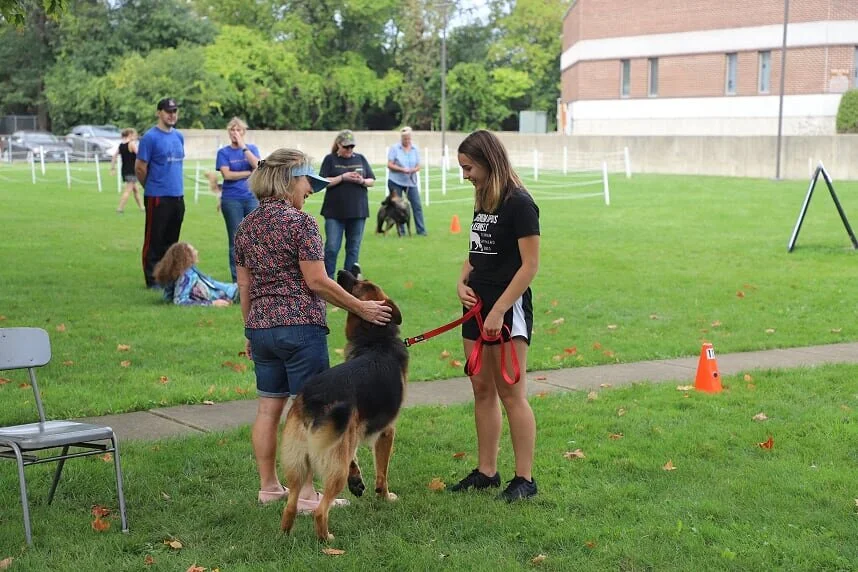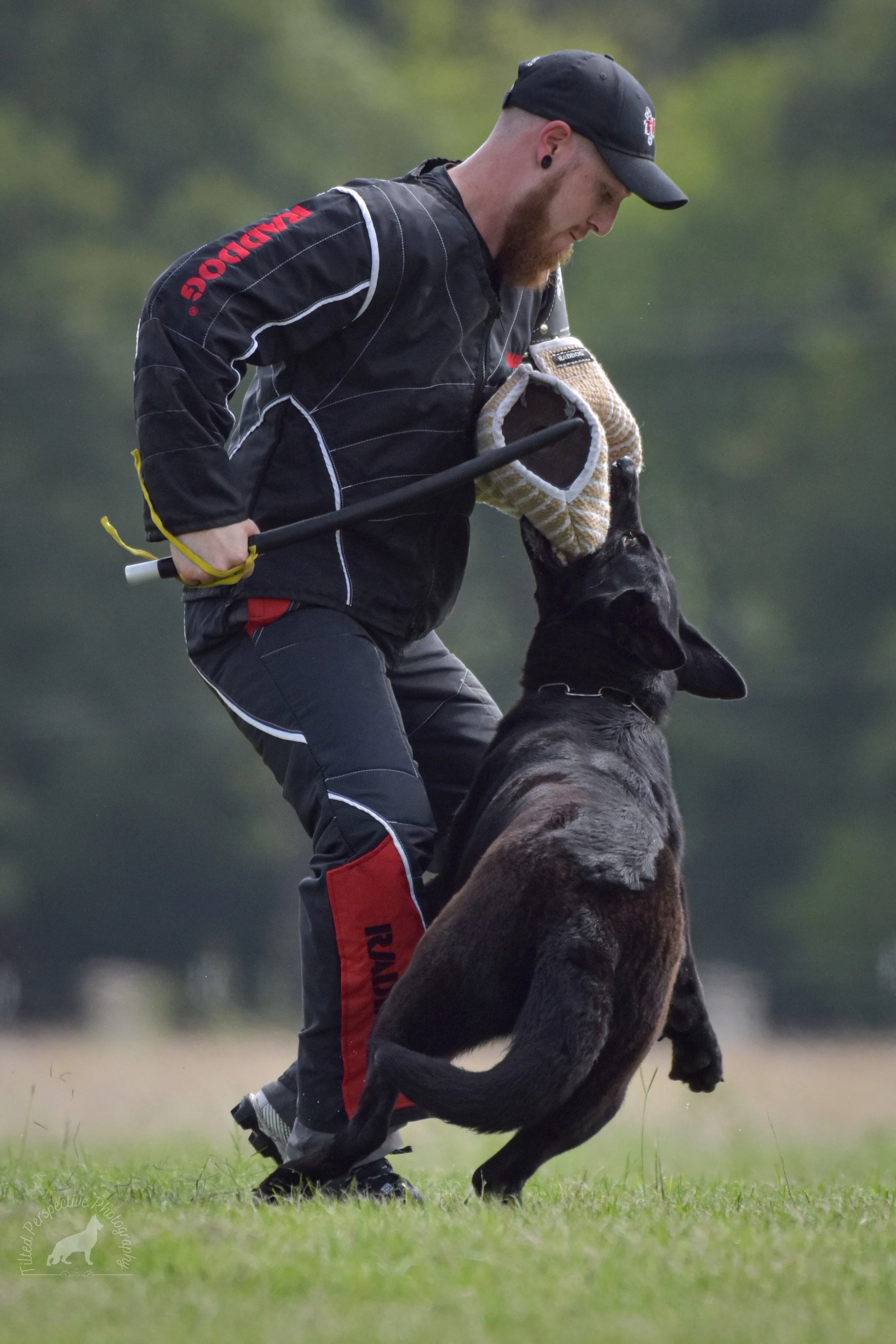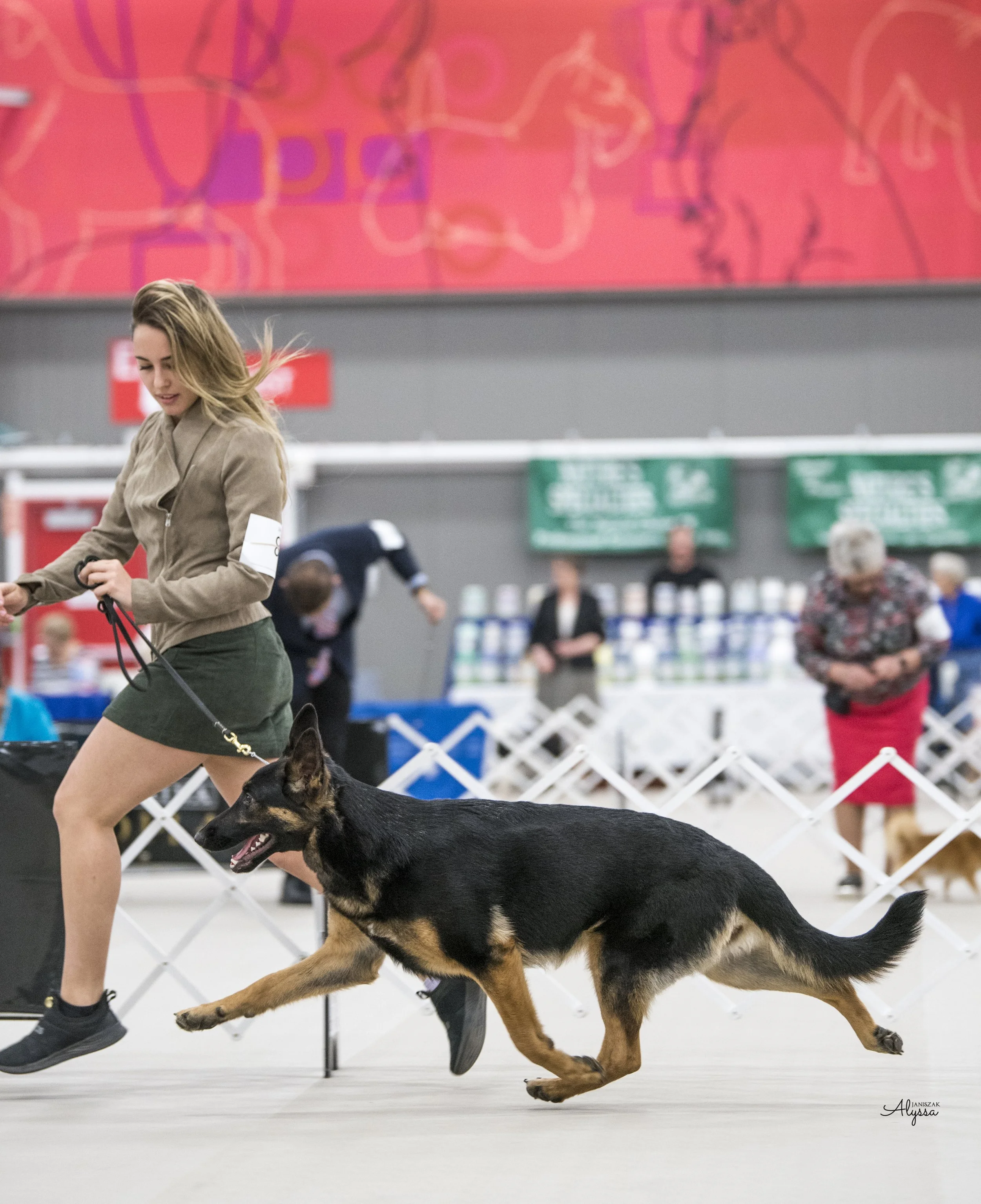Breeding goals
“They cannot track as well as Bloodhounds or work sheep as superbly as Border Collies or guard as aggressively as some Dobermans but on all-round merit there is no equal to a well-trained German Shepherd.” ~ Malcolm B. Willis
Kaiser’s certified 4-generation pedigree
Pedigree
Pedigrees are the physical documents that record the family trees and history of purebred dogs. Pedigrees record the dogs’ ancestors for many generations—their names, accomplishments in regards to performance and show titles and temperament tests, as well as health records. As breeders, a pedigree is the single most important document when it comes to making breeding decisions. There is an adage that says a dog will not reproduce itself, but rather will reproduce its pedigree. This proves to be true time and time again.
Within the German Shepherd breed, there are quite a few distinct “lines” or types of the breed that have developed separately over the decades. Some lines have developed differently than other lines largely due to geographic separation, such as the West German Showline & American Showline, and the West German Working Line & East German Working Line. Others have developed separately due to prioritization of different breeding goals, such as the West German Showline & West German Working Line.
Magnum Opus breeds four distinct and separate lines within our single program. Most breeders will choose one line or type to breed, and occasionally you will see a breeder with two lines; but we have four. The four lines we have chosen to breed are the West German Working Line (WGWL), West German Show Line, (WGSL), American Show Line (AMSL), and our own line bred specifically for service work. We have chosen to breed four distinct lines in order to achieve a variety of different goals and participate in a variety of sports and work with our dogs, while still maintaining high predictability in our litters of puppies to help us place them in appropriate homes.
Each line has its own specific traits, benefits and drawbacks, all while remaining true to the standard of the German Shepherd breed. We seek to mitigate the flaws and enhance the benefits of each line we breed, through careful and selective breeding over many generations. We do not feel that any one line or type is inherently superior or inferior to the others; however, we strongly believe that when searching for a dog to do a specific job such as IGP, service work, etc, you can greatly increase your chances of success by choosing the line or type that is bred for that type of work. We are happy to make recommendations for your lifestyle based on our experience with each line!
Helena’s hip xrays, rated A-1
Health
Healthy dogs is our first and foremost breeding goal. To accomplish this, we rigorously health test all our dogs before any breeding occurs. The health testing recommended by AKC is to perform hip and elbow evaluations for the purpose of preventing dysplasia and other deformities. This means X-rays and then having them scored or evaluated by experts with either SV, OFA or PennHip.
Sometimes, less than ethical breeders will argue that this type of testing is not important. They argue that OFA is too subjective, or cite examples of two dogs that both score “good” OFA hips producing a pup that scores “mildly dysplastic” hips. These are legitimate concerns; SV and PennHip have different, more objective ways of evaluating hips and elbows and that is why I personally prefer them. However, despite the fact that this type of selective breeding does not absolutely guarantee the offspring will have non-dysplastic hips and elbows, selectively breeding passing dogs only has been proven to reduce the prevalence of dysplasia over a longer period of time.
Degenerative Myelopathy (DM) is a terrible disease that causes weakness and paralysis in the spine and affects a large number of German Shepherds. We genetically test for DM to ensure our breeding dogs are not “affected”, or likely to develop the disease later in life. We also need to know if the dog is a “carrier” of the mutation or “clear”. If two “carriers” are bred together, they could produce “affected” dogs. Please note, there is still lots of continuing research on the subject.
Brucellosis is a contagious disease in dogs that causes fertility issues—it can cause males can become sterile, and can cause females to abort or absorb litters late in their pregnancies. It is normally transmitted through bodily fluids, so it is comparable to an STD. There is a highly accurate test for brucellosis available and we test all dogs involved before any live breedings.
MDR1 Sensitivity is gene mutation that can cause drug sensitivity (for carriers) or serious neurological issues (for affected dogs). This is known to affect many German Shepherds, and we test for that as well in order to reduce the number of “affected” dogs.
In order to prevent genetic cardiovascular disease in our puppies, we also think it’s important to have our breeding dogs screened for potential problems via cardiac exams through OFA. We have our dogs screened for any thyroid issues through OFA to ensure they are phenotypically normal and will not pass any thyroid diseases along to their offspring. And Finally, Eye examinations through OFA are an excellent way to prevent pups being bred that have cataracts, glaucoma, progressive retinal atrophy, the list goes on.
Our health testing is extensive because excellent health is our primary goal. Magnum Opus goes above and beyond to ensure this—many of these tests are not required or even recommended by the AKC, GSDCA or OFA. We will add even more testing to our breeding program in the future, as more testing becomes available through continued research. We are now testing our second generation for any spine deformities as well as recording dentition.
Kaiser saying hello to a friendly stranger during his GSDCA Temperament Test
Temperament
Breeding dogs that have stable temperament and solid nerves is critically important to producing excellent German Shepherds. Far too many GSDs are extremely reactive, overprotective or possessive, or fearful and anxious. There is a common myth that dogs’ personalities or temperament is “all in how you raise them”. This is simply not the case; temperament is very reliant on genetics. It is estimated that anywhere from 20-60% of temperament is determined by genetics. German Shepherds have been specifically studied for the heritability of personality traits and showed consistency in certain traits. There is a reason why Labrador retrievers love water, border collies love herding sheep, and German Shepherds are protective of their owners—these are genetic abilities purposefully bred for and passed down through the generations.
Therefore, we find it extremely important to breed only dogs that fit the breed standard for temperament, and can pass temperament tests like the GSDCA TT, AKC TT, or CGC. All of our dogs currently have passed the CGC, CGCA, and CGCU temperament tests .The FCI Standard for German Shepherd Dogs calls for dogs that are“well-balanced (with strong nerves) in terms of character, self-assured, absolutely natural and (except for a stimulated situation) good-natured as well as attentive and willing to please. He must possess instinctive behavior, resilience and self-assurance in order to be suitable as a companion, guard, protection, service and herding dog.” This is our goal.
To develop that a little, we seek to produce dogs with solid working ability. Dogs that are clear headed, stable, naturally aloof to strangers but approachable without reaction, and confident in new environments and experiences.
Of course, temperament and personality will inevitably be affected by environment and the way these puppies are raised. Our goal is to produce the best genetically sound “head start” possible; a combination of excellent genetics and proper socialization and training will give you the best end result.
Hex earning her IGP1
Working Ability
German Shepherds are working dogs, first and foremost. The original objective in creating the breed was to create a versatile working dog capable of herding, protection and general service. Unfortunately, today we see far too many Shepherds are from “pet lines”, or watered down versions of the breed. These dogs were bred without care or selection simply because they were great pets or a pretty color.
All of our dogs must first prove their working ability before they will be bred. We currently train and compete in the sport of IGP. We also train and compete in quite a few AKC performance events, mainly herding, agility, obedience and rally. All of our dogs will attain performance titles, or actively fulfill a working purpose (such as service work) before they are bred.
Star demonstrating a correct flying trot
Structure
Proper structure for the German Shepherd dog is disagreed upon by experts, and poorly understood by the general public. Yes, there is a standard (several actually, SV and AKC standards are slightly different), but they still allow for a lot of variation and are open to interpretation. Terms like “king shepherds” “straight back” and “old fashioned” are widely misused by backyard breeders as well as underinformed prospective puppy buyers. Another huge problem is the general public doesn’t understand what a proper stack does to the dog’s structure and topline, or what happens when a dog moves in certain ways. There are many sensational photos of “crippled show line” German Shepherd dogs circulating the internet, and while many indeed are poorly bred and have terrible structure, many are just photos of a correct, well structured dog placed in an exaggerated or incorrect stack, or performing a strenuous or exaggerated movement (like what is seen in the SV show ring).
The German Shepherd breed standard calls for a straight back with slightly sloping croup. This is what we breed for—a dog with very little curvature in the lumbar spine, a straight back between the withers and croup, and a croup that is slightly sloping (as opposed to a steep croup). Keep in mind that straight does not equal level, and the 3-point stack can drastically change a dog’s topline. The best way to truly judge a dog’s structure is through hands-on analysis, and when this is not possible through videos of the dog’s natural movement.
Correct movement is extremely important as well. We breed for dogs that can effortlessly showcase the flying trot that is a hallmark of the breed, without over angulation/exaggeration or restricted movement either in the rear or the shoulder. The breed standard calls for a far-reaching, consistent and smooth trotting motion. This is what we breed for.
Click the “Learn More” button to reach an incredibly helpful resource with lots of articles, pictures and graphs in regards to proper structure in the German Shepherd Dog. Here is link to the SV breed standard and a link to the AKC breed standard.
We believe longevity is the reason to emphasize structure. We seek to breed dogs that can work well and for a long time without breaking down or getting injured, and proper structure is the best way to ensure that. All of our dogs are shown in conformation before breeding. They must achieve either a USCA/SV show rating, AKC Champion title, or a UKC Champion title at minimum before breeding takes place.
In Summary
“Magnum Opus” is Latin for “Great Work” or “Greatest Achievement”. The overall breeding goal for this kennel is to create well-rounded and versatile German Shepherd Dogs free of the many problems that plague this beautiful breed. This will take many generations of careful selection and dedication to breed standards and ideals, and it is not a breeding goal that was undertaken lightly. Overall, the five cornerstones of our breeding program remain: to produce dogs that are excellent in pedigree, health, temperament, working ability, and structure.
Prices for these high quality puppies range from $3500-4000






